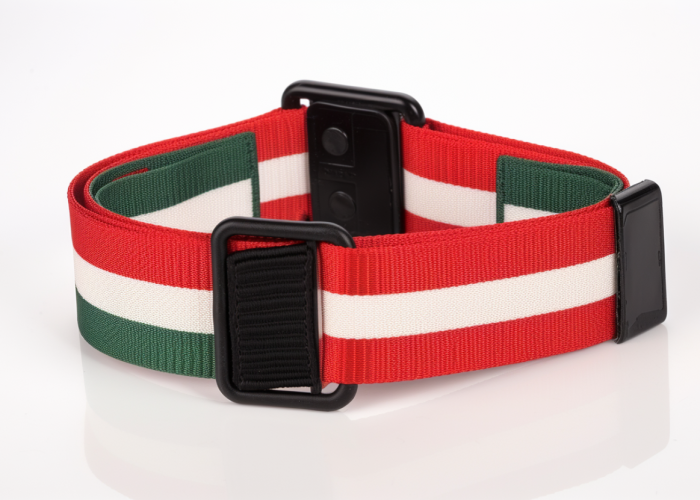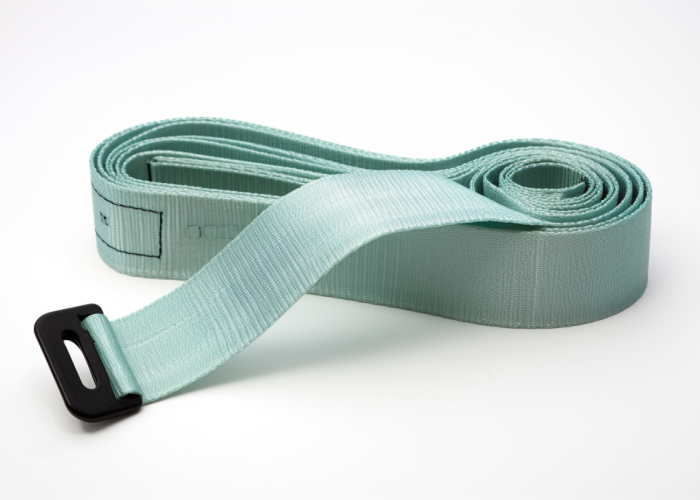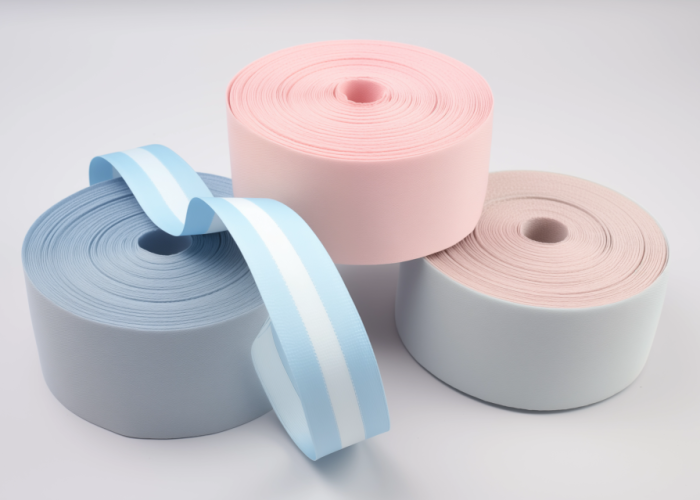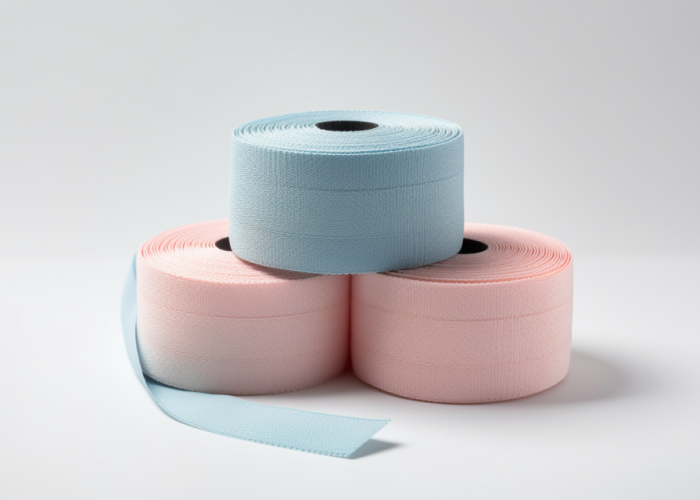Selecting appropriate webbing for skin-contact products requires understanding critical safety distinctions that impact regulatory compliance and end-user safety. Product developers often confuse “skin-safe” with “medical-grade” terminology, risking costly development errors. As custom webbing specialists, we engineer precise solutions that meet the exact safety specifications your medical and skin-contact applications demand.
No, skin-safe webbing is not the same as medical-grade webbing. Medical-grade webbing requires rigorous regulatory certification, biocompatibility testing, controlled manufacturing processes, and complete material traceability documentation, while skin-safe webbing merely indicates general non-irritation properties for typical users.
Discover essential testing standards, material differences, and manufacturing criteria that define medical-grade vs. skin-safe webbing—ensuring compliance and reliable performance.


Webbing manufacturing expert with 15+ years of experience helping product developers build high-performance straps for industrial, medical, and outdoor use.
The most commonly used materials for medical-grade webbing are cotton, polyester, nylon, and polypropylene, each offering distinct properties suited for specific medical applications. Cotton provides excellent biocompatibility and breathability, polyester offers durability and chemical resistance, nylon delivers superior strength-to-weight ratio, and polypropylene provides outstanding moisture resistance and chemical stability critical for medical environments.
KEY MATERIAL PROPERTIES
Cotton webbing provides hypoallergenic natural fibers with 27% moisture absorption capacity, preventing skin maceration during extended wear. Ideal for patient restraints and orthopedic supports, it requires proper sterilization to prevent bacterial growth.
Polyester webbing delivers 30-40% greater strength than cotton with minimal elongation (<5%). It withstands repeated sterilization without degradation, making it perfect for surgical table straps and equipment securing systems where dimensional stability and fluid resistance are essential.
Nylon webbing offers exceptional tensile strength (7,000+ PSI) with controlled elasticity (15-20%). This balance provides necessary shock absorption in rehabilitation equipment and mobility assistance devices. Manufacturing techniques can modify these properties for specialized applications.
Polypropylene webbing features outstanding chemical resistance and minimal moisture absorption (0.01%). Its inert structure withstands disinfectants while providing excellent biocompatibility with minimal leaching, making it optimal for dialysis machine straps and positioning devices.
Advanced manufacturing enhances these materials through specialized weaving patterns, antimicrobial additives, and custom edge treatments, enabling precise customization for specific medical device requirements.
Material Breathability Moisture Absorption Chemical Resistance Tensile Strength Best For
Cotton Excellent 27% Low Low Skin-contact restraints
Polyester Moderate <1% Excellent High Surgical straps, equipment restraints
Nylon Good 4–7% Moderate Very High Rehab straps, mobility aids
Polypropylene Low 0.01% Excellent High Dialysis straps, imaging restraints
Medical-grade webbing materials differ significantly in skin safety based on cellular toxicity, sensitization potential, and surface characteristics. Cotton offers superior natural biocompatibility with minimal allergic response, polyester provides excellent chemical stability with lower moisture-related irritation, nylon balances good biocompatibility with durable performance, and polypropylene delivers outstanding inertness with minimal leaching potential for sensitive applications.
KEY SKIN SAFETY FACTORS
Cotton webbing provides exceptional skin safety through natural hypoallergenic properties and absence of chemical treatments. Its cellulose structure carries minimal risk of adverse skin reactions even during 24+ hour contact periods. However, its high moisture retention (27%) can create environments conducive to bacterial growth if not properly maintained.
Polyester webbing offers excellent skin safety through chemical stability and reduced moisture retention. Its synthetic fibers resist degradation during sterilization processes, preventing formation of skin-irritating compounds. Medical-grade polyester formulations undergo additional purification to remove residual catalysts and ensure <0.01% extractable compounds.
Nylon webbing balances skin compatibility with performance characteristics. Medical-grade nylon undergoes specialized washing processes that remove manufacturing residues and potential irritants. Its smooth surface profile (measured at <0.5μm roughness) minimizes mechanical irritation during movement, though some patients (approximately 2-3%) may experience sensitivity to nylon compounds.
Polypropylene webbing excels in applications requiring maximum skin safety. Its chemically inert structure minimizes reaction potential with virtually no leaching of compounds (<0.001% extractables). The material’s hydrophobic surface prevents moisture accumulation against skin, significantly reducing maceration risk in extended-wear scenarios.
Manufacturing processes significantly impact skin safety across all materials. Specific heat-setting techniques, edge finishing methods, and specialized washing protocols can reduce potential irritants by up to 90%. Biocompatibility testing according to ISO 10993 standards provides quantitative verification of skin safety performance for medical applications.
The physical properties that make webbing safe for medical applications include tensile strength, edge smoothness, dimensional stability, and controlled elongation characteristics. These properties ensure that medical webbing can withstand clinical usage demands while minimizing risks to patients through consistent performance, reduced abrasion potential, and reliable load distribution across the webbing structure.
KEY PHYSICAL PROPERTIES
Tensile strength directly impacts medical safety by preventing catastrophic failure under load. Medical-grade webbing maintains safety factors of 5:1 minimum, with nylon providing superior strength-to-weight ratio. This property ensures patient security in critical applications like surgical positioning and transfer devices.
Edge smoothness significantly reduces skin irritation risk. Medical webbing requires specialized finishing techniques including ultrasonic cutting (reducing edge fraying by 95%), heat-sealing (creating rounded profiles), and precision folding. These processes eliminate abrasive edges that could damage sensitive skin during movement.
Dimensional stability ensures consistent performance in critical applications. Medical-grade materials maintain dimensional tolerances within ±3% after sterilization and environmental exposure. This stability prevents unexpected elongation or contraction that could compromise patient safety in positioning applications.
Thickness uniformity creates even pressure distribution across skin contact areas. Medical webbing maintains thickness variations below ±0.1mm throughout its structure, preventing pressure points that could lead to tissue damage during extended use. Manufacturing techniques like tension-controlled weaving ensure this critical consistency.
Surface texture minimizes friction against skin while providing necessary grip. Optimized medical webbing achieves surface roughness values below 0.5μm while maintaining sufficient coefficient of friction (0.3-0.4) to prevent unwanted movement. These balanced properties minimize shear forces that could damage sensitive skin.

Different weaving methods significantly affect medical-grade webbing performance through altered tensile strength, flexibility, edge stability, and surface characteristics. Plain weave provides maximum dimensional stability and thickness uniformity, twill weave offers superior flexibility with controlled elongation, herringbone patterns create enhanced grip without increased abrasion, and specialized medical weaves integrate performance zones for optimized functionality in critical applications.
KEY WEAVING METHODS
Plain weave construction creates maximum dimensional stability in medical webbing. Its simple over-under pattern produces uniform thickness (±0.05mm variation) and minimizes elongation under load. This consistency is crucial for applications requiring precise positioning and predictable performance characteristics.
Twill weave provides enhanced flexibility while maintaining strength. Its diagonal pattern distributes forces more efficiently, increasing tensile strength by 15-20% compared to plain weave of identical materials. This construction excels in applications requiring controlled movement while maintaining patient security.
Herringbone patterns create specialized surface characteristics that enhance functionality. The directional pattern increases surface friction coefficient by approximately 30% without increased abrasion potential. This property prevents unwanted slippage in critical positioning applications while maintaining skin safety.
Tubular construction significantly improves edge integrity. By eliminating exposed edges, this weaving method reduces fraying risk by over 90% compared to traditional flat webbing. The enclosed construction creates naturally rounded edges that minimize skin irritation during patient movement or adjustment.
Specialized medical weaves integrate multiple performance characteristics in single webbing structures. These advanced constructions incorporate zones of controlled elongation, reinforced areas for attachment points, and optimized surface textures. Manufacturing capabilities now allow customized weaving patterns tailored to specific medical device requirements.
Medical-grade webbing is ideal for patient positioning systems, mobility assistance devices, surgical table accessories, orthopedic supports, and wearable monitoring equipment. These applications leverage webbing’s unique combination of strength, flexibility, biocompatibility, and customizable properties to enhance patient care while maintaining safety standards under demanding clinical conditions.
KEY APPLICATIONS
Patient positioning applications demand high-performance medical webbing. These systems require exceptional tensile strength (maintaining integrity at 5× rated load), precise dimensions (±1mm tolerance), and biocompatibility for extended skin contact. Cotton-polyester blends and specialized polypropylene constructions dominate this category due to their balanced performance characteristics.
Mobility assistance devices leverage controlled elongation properties. Transfer slings and gait belts require specific elongation profiles (typically 10-15% at rated load) to prevent jerking movements while maintaining patient security. Nylon constructions with specialized weaving patterns provide optimal safety characteristics for these dynamic applications.
Surgical table accessories require maximum chemical resistance and cleanability. These components face aggressive disinfection protocols and potential exposure to bodily fluids. Polyester and polypropylene constructions with sealed edges and non-absorbent properties ensure integrity through thousands of sterilization cycles in these demanding environments.
Orthopedic supports benefit from application-specific performance characteristics. These devices require controlled compression, precise elongation, and excellent breathability during extended wear. Custom webbing constructions with specialized elasticity zones and moisture management features optimize therapeutic outcomes while maintaining patient comfort.
Wearable monitoring equipment requires specialized attachment solutions. These applications demand minimal interference with sensor function, consistent tension maintenance, and maximum patient comfort. Advanced manufacturing techniques enable integration of conductive elements, controlled stretch zones, and anatomically optimized designs for these growing applications.

The primary testing standards that ensure medical webbing biocompatibility are ISO 10993 series, USP Class VI, AATCC skin irritation tests, and FDA-mandated biocompatibility evaluations. These comprehensive protocols assess cytotoxicity, sensitization potential, irritation risk, and systemic toxicity through standardized testing methodologies that verify material safety for specific medical applications and patient contact scenarios.
KEY TESTING STANDARDS
ISO 10993 provides the foundational framework for medical webbing biocompatibility. This comprehensive standard addresses cytotoxicity (cell damage), sensitization (allergic response), and irritation through standardized testing protocols. Medical-grade webbing must achieve passing scores across all applicable sections based on intended patient contact duration and type.
USP Class VI testing represents an elevated standard specifically addressing plastics and polymers. This protocol includes implantation tests, systemic injection testing, and intracutaneous reactivity assessments. Synthetic medical webbing often undergoes this rigorous evaluation to verify safety for critical applications.
AATCC test methods address textile-specific biocompatibility concerns. These protocols evaluate color fastness, residual chemical content, and abrasion potential through standardized methodologies. Medical webbing manufacturers utilize these tests to verify that manufacturing processes and finishing treatments do not introduce biocompatibility risks.
FDA requirements establish application-specific testing thresholds. Medical devices incorporating webbing must satisfy biocompatibility testing based on their classification and intended use. These requirements often include leachable/extractable testing, degradation assessment, and long-term safety evaluation for patient-contacting materials.
Testing documentation forms a critical component of regulatory compliance. Medical device manufacturers must maintain comprehensive records demonstrating webbing biocompatibility for their specific application. This documentation includes raw material certification, process validation, and final biocompatibility verification through accredited laboratory testing.
Medical-grade webbing must meet regulatory requirements including FDA medical device classification compliance, ISO 13485 quality management systems, material biocompatibility verification, traceability documentation, and risk management protocols. These comprehensive requirements ensure that webbing used in medical applications meets stringent safety standards through verified production processes, validated material properties, and documented quality controls.
KEY REGULATORY REQUIREMENTS
FDA classification requirements determine specific compliance needs based on device risk. Webbing incorporated into Class I devices needs general controls, Class II requires special controls and often 510(k) clearance, while Class III demands premarket approval. Manufacturers must ensure webbing materials satisfy requirements appropriate to the final device classification.
ISO 13485 certification establishes specialized quality management for medical materials. This standard requires validated processes, controlled environments, and comprehensive documentation exceeding typical industrial requirements. Medical webbing production under this system ensures consistent quality through stringent manufacturing controls.
Material biocompatibility verification provides documented safety evidence. Medical webbing requires testing per ISO 10993 appropriate to the nature and duration of patient contact. This testing confirms cytotoxicity, sensitization, and irritation performance suitable for the intended medical application.
Traceability documentation enables complete material history verification. Medical-grade webbing requires documented chain of custody from raw material to finished product. This traceability allows identification of all production parameters, quality results, and process controls affecting each lot of material.
Risk management processes systematically address potential hazards. Following ISO 14971 methodology, medical webbing manufacturers must identify, evaluate, and mitigate risks associated with their materials. This process verifies that all reasonable steps have been taken to ensure patient safety in the final application.

Understanding the distinction between skin-safe and medical-grade webbing is crucial for product developers. While skin-safety focuses on basic irritation prevention, true medical-grade materials demand comprehensive testing, specialized manufacturing, and extensive documentation. Contact us to explore customized webbing manufacturing solutions tailored to your product requirements, combining optimal material selection with advanced production techniques for your medical applications.
Yes, cotton webbing is suitable for certain medical applications requiring breathability and natural biocompatibility. It excels in patient restraints and orthopedic supports, but requires proper sterilization protocols due to its high moisture absorption properties which can potentially harbor bacteria if not properly maintained.
Polypropylene webbing rarely causes skin irritation due to its chemically inert structure and extremely low leaching potential (<0.001% extractables). Its hydrophobic properties prevent moisture accumulation against skin, significantly reducing maceration and irritation risks even during extended contact periods.
ISO 10993 certification and FDA compliance documentation ensure webbing is safe for medical use. These standards verify biocompatibility through cytotoxicity, sensitization, and irritation testing appropriate to the specific type and duration of patient contact intended for the final medical application.
Nylon webbing performs exceptionally well in medical environments requiring both strength and flexibility. With tensile strength exceeding 7,000 PSI and controlled elasticity (15-20% elongation), it’s optimal for rehabilitation equipment and mobility assistance devices where shock absorption and durability are essential.
Weaving methods impact biocompatibility by altering surface texture, edge characteristics, and material stability. Plain weaves provide maximum cleanability with minimal particle trapping, twill patterns offer better flexibility with controlled friction, and specialized edge treatments significantly reduce irritation potential in patient-contacting applications.
Polyester webbing’s chemical stability, tensile strength, and fluid resistance make it ideal for medical devices. It maintains structural integrity through repeated sterilization cycles and offers minimal elongation (<5%), making it perfect for applications requiring dimensional stability like surgical table straps and equipment securing systems.